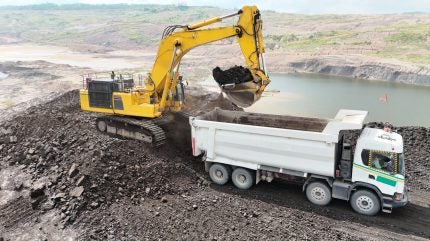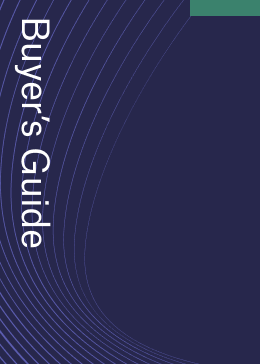
Despite it being an emergent technology within the mining sector itself, greater value is already being excavated from blockchain through the now-also-growing use of AI.
As recently as October 2023, Mining Technology outlined supply chain management as the single biggest benefit of blockchain for the mining industry.
“Blockchain can allow mining companies to track and trace mine resources throughout the supply chain from source to end use,” it explained, noting the complexity of supply chains in the industry.
“This ability is of paramount importance, particularly when dealing with materials sourced from unregulated areas,” it added.
Supply chain transparency
Indeed, supply chain management remains the main use case of blockchain for the mining sector in the view of Edward Bickerton, associate analyst at GlobalData and author of the company’s recent Blockchain in Mining report.
“Blockchain is useful for ensuring data integrity, especially when that data is shared across multiple parties,” he tells Mining Technology. “In the mining sector, blockchain can enable the transparent tracing of materials across the supply chain.”
The report outlines that the industry’s supply chains are often extremely complex due to the typically long periods over which mineral deposits can be extracted from mines and the complicated processes involved in extracting them.
“Depending on the minerals, the supply chain could include numerous stages, geographical locations, transactions, invoices, individuals and organisations,” it explains.
What’s more, it adds: “Since 2020, global supply chains have faced unprecedented disruptions due to Covid-19, the Ukraine war and attacks on ships in the Red Sea.”
Outlining the value of blockchain for sector supply chains within this context, the report says that mining companies can maintain digital records of the entire mineral value chain.
“Every attribute can be captured, and documents can be updated when the process demands an upgrade,” it says. “Mining companies can enhance their visibility and engender trust within the market, while sellers can share their digital register details.”
This is due to blockchain’s use of peer-to-peer networks as a decentralised means of storing information digitally, which makes it very difficult to alter. For this reason, blockchain is also being used within mining – and elsewhere – for tracking the likes of financial transactions (blockchain’s bread and butter), environmental, social and governance (ESG) performance and the authenticity of parts and equipment being sourced.
Among the players GlobalData points to as leading the way in using blockchain to improve supply chain transparency (and therein trust) among other applications within the sector are tech giants IBM and Oracle, logistic providers Global Shipping Business Network and the Aura Blockchain Consortium, a non-profit group of luxury brands employing the technology for the likes of communicating authenticity, aiding responsible sourcing and achieving sustainability.

Of Aura’s use of blockchain for diamond tracking, the organisation’s CEO Romain Carrere tells Mining Technology: “In the diamond sector, blockchain technology has the potential to aggregate all existing digital solutions, certificates and customer experience programmes into a single, customer-facing platform.
“Through blockchain, a tamper-proof digital ledger records every step of a diamond’s journey, from the mine to rough cut screening, to cutting, to polishing, to setting, all the way to the retail counter and beyond. This level of visibility offers a unique advantage in the market: consumers can now verify the origin, authenticity and ethical sourcing of their diamonds with unparalleled certainty. For the diamond industry, this means enhanced consumer trust, improved brand reputation, and compliance with increasing regulatory demands for sustainability and ethical transparency.”
Blockchain for supply chains
Elaborating on the point of trust, Leanne Kemp, founder and CEO of digital transparency company Everledger, a significant provider of blockchain solutions in the mining sector, explains to Mining Technology: “Transparency has always been blockchain’s strongest attribute. It removes the fog of mistrust by providing a single, tamper-proof version of the truth. In mining, this is vital for ensuring the integrity of the supply chain, from the mine to the market.”

Kemp too points to diamond mining as an example, echoing the points that it is critical to be able to ensure at every step of the supply chain that a stone is conflict-free, ethically sourced and compliant with industry standards.
The view of blockchain as being able to facilitate transparency in a way that would otherwise not be possible is one to which Ella Cullen, co-founder and CMO of blockchain-based traceability software provider Minespider, also subscribes.
“For mining operations, this means stakeholders can verify the origin, movement and transformation of raw materials with complete transparency,” she explains to Mining Technology.
“By digitising these processes, blockchain enables companies to meet regulatory requirements, reduce the risk of fraudulent claims and build trust with customers and partners.”
Now, though, with the evolution of the tech ecosystem, Kemp argues that there are benefits to be had beyond just transparency.
“Mining supply chains must now respond to real-time disruptions, ESG risks and shifting demand,” she says. “AI augments blockchain by enabling predictive analytics and anomaly detection. It helps businesses not just track but anticipate and adapt – ensuring supply chains are both transparent and resilient.”
AI and blockchain in mining
It is Kemp’s assertion that, together, blockchain and AI can unlock not just transparency in mining supply chains but also actionable intelligence that can help shape “a smarter, more sustainable future” for the industry.
“Looking ahead, the future lies in hybrid systems,” she suggests. “Blockchain will remain essential for trust but AI will drive the insights, adaptability and scalability needed for mining’s next chapter. Together, they will create an ecosystem that is not just transparent, but intelligent – one that anticipates challenges, ensures accountability and delivers sustainable value.”
Of course, AI is only as good as the data upon which it is trained, and it is critical that mining companies have confidence in the intelligence being outputted. Bickerton believes blockchain can assure this.
“AI models rely on high-quality training data,” he explains. “Blockchain in the mining sector can provide an auditable dataset of material provenance, resulting in more accurate and reliable AI models.”
Bickerton’s colleague Jordan Strzelecki, also an associate analyst and the author of GlobalData’s AI in Mining report, adds: “By integrating blockchain technology, the data analysed by AI can be securely stored and shared among relevant parties, ensuring transparency and trust in the mining sector.”

Like Kemp, Cullen sees the industry’s future as being tied to this joint use of the two technologies.
“AI and blockchain are complementary technologies that amplify each other’s strengths,” she says. “AI can automate the data collection process, clean and analyse supply chain data and identify patterns or anomalies that might otherwise go unnoticed. Blockchain ensures the integrity and immutability of this data.”
Cullen is of the view that blockchain technology has reached a degree of maturity in the mining sector – and this is echoed in some of the data outlined in Bickerton’s Blockchain in Mining report.
“From 2019 to 2022, the number of mentions of blockchain in construction companies’ filings rose from 665 to 1,789 before falling 49% in 2023, possibly due to interest shifting away from blockchain towards AI after the release of ChatGPT in late 2022,” it says. “Other themes mentioned alongside blockchain included enabling technologies such as cloud and AI…”
Digital product passports
Cullen suggests that blockchain’s growing maturity within the sector is reflected in particular by the adoption of blockchain-based digital product passports (DPPs) – digital twins of products that contain information about them and their value chains.
“These solutions are no longer just proof-of-concept projects but are increasingly being recognised and adopted as industry standards,” she says. “The widespread acceptance of blockchain-based DPPs reflects the mining industry's commitment to traceability, transparency and sustainability.”
Indeed, the EU’s Ecodesign for Sustainable Products Regulation (ESPR), which entered into force last year, requires the use of DPPs for many product categories. Aimed at improving the sustainability and circularity of designated products, part of the regulation requires that DPPs be implemented to make record information about their environmental impact, recyclability, repairability and use of materials.
“ESPR compliance and other certification requirements such as the Kimberley Process Certificate, G7 Certificate, or a laboratory certification such as GIA are reshaping brands’ relationships with their supply chains, and many products – including diamonds – sold in the EU will need DPPs,” says Carrere. “Given the environmental, social and ethical complexities of the diamond industry’s supply chains, these regulations will have a major effect on the diamond landscape as DPPs become a requirement.”
While they may be increasingly mandated, DPPs are not new. As Cullen explains, Minespider has been providing Minsur, one of the world’s largest tin producers, with the technology since 2018. The two implemented what Minespider says was the first full-scale mineral traceability project. They now track more than 30,000 tonnes of tin a year, with Minsur able to differentiate its products from others on the market based on factors like health and safety, ESG and sustainability.
Moreover, Minespider is working with partners to develop AI solutions aimed at, in Cullen’s words, “allowing clients to ‘speak’ to their products via the DPP”.
“The cutting edge lies in the integration of blockchain with other emerging technologies, such as internet of things devices for real-time data collection and AI tools for automating data input or supply chain analytics,” she says. “The future of blockchain in mining includes the widespread adoption of DPPs, which provide a complete view of a material's life cycle.”
Major mining companies like Glencore and Teck Resources are also working with blockchain platforms for tracking, while Everledger offers what it calls “dynamic” digital twins for diamonds and critical minerals.
“These twins don’t just track provenance; they evolve with the asset, incorporating new data and insights over time,” explains Kemp.
Echoing this, Carrere says: “DPP solutions go beyond transparency and traceability benefits – enabling immediate access to proof of product authenticity and ethical production. The depth and accessibility of this information has the potential to build unprecedented levels of trust and transparency.”
Kemp adds: “Blockchain will remain essential for trust, but AI will drive the insights, adaptability and scalability needed for mining’s next chapter. Together, they will create an ecosystem that is not just transparent, but intelligent – one that anticipates challenges, ensures accountability and delivers sustainable value.”





